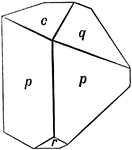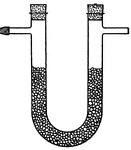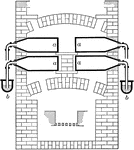Clipart tagged: ‘Hydrogen’

Ammonium Chloride
The form 3O3, {311} on Ammonium Chloride (Sal Ammoniac) may have only six of its twenty-four planes…
Combinational Volume
"Suppose our volume of hydrogen to unite with the volume of chlorine; if one particle of hydrogen combines…
Combinational Volume
"When one volume of hydrogen actually unites with one volume of chlorine, two volumes and not one volume…
!["If the two wires from a battery be placed in pure water, it will be foud tat practically no current passes...If a small quantity of sulphuric acid is added to the water, the solution is a good conductor. During the passage of current, bubbles form at the ends of the wires: at the positive electrode (anode)...oxygen appear[s]; at the negative electrode (cathode) there is a rapid evolution of hydrogen." -Brownlee 1907](https://etc.usf.edu/clipart/35400/35447/elec_35447_mth.gif)
Electrolysis
"If the two wires from a battery be placed in pure water, it will be foud tat practically no current…

Elongation in the Direction of the Orthogonal Axis
In some cases, the elongation of a crystal may be in the direction of the orthogonal axis, whose position…

First Stage in Glue Manufacturing
This illustration shows the first stage in the manufacturing of glue. The material used for making the…

Hemimorphism in the Direction of the Axis of Symmetry
This figure shows hemimorphism in the direction of the axis of symmetry on a crystal of Pentacid Alcohol…

Hemimorphism in the Direction of the Vertical Axis
Hemimorphism in the direction of the vertical axis has been observed on crystals of the tetragonal salt,…

Hydrogen
This illustration shows pure hydrogen being collected by passing electricity through a dilute acid.

Hydrogen
This illustration shows a beaker full of sulphuric acid and a stick of zinc, giving off hydrogen.

Hydrogen Weight
This illustration shows a test to show the proportions of weight between hydrogen and oxygen.

Liquid Air Machine
"A labratory liquid air machine used by Thomson and Joule used to cool hydrogen from a gaseous state…
Mercury Tube
This illustration shows the proportions of volume in which hydrogen and oxygen combine by introducing…

Phosphorus Distillation
Picture represents clay retorts used in the distillation of phosphorus at high temperatures, with phosphorus,…


